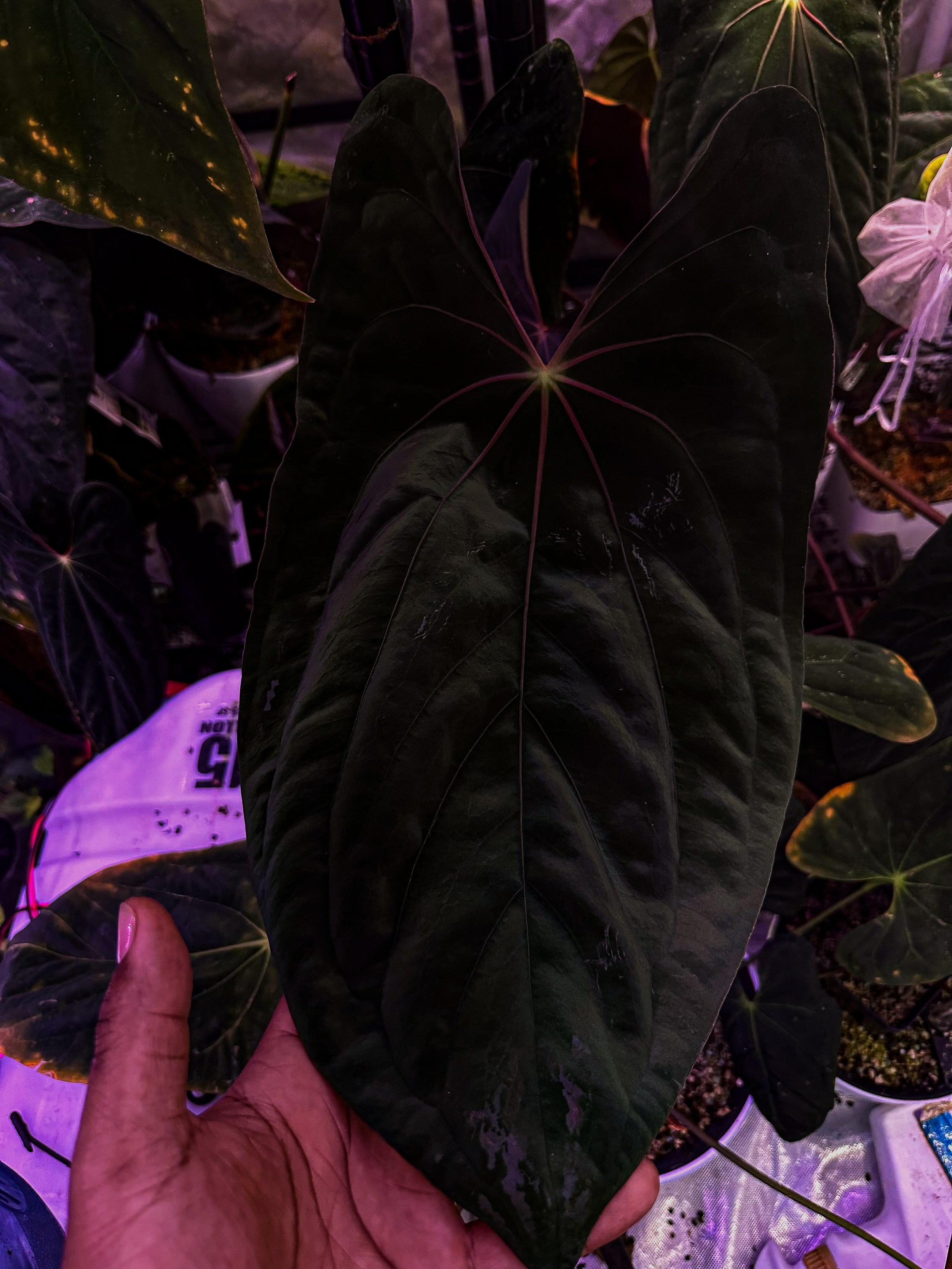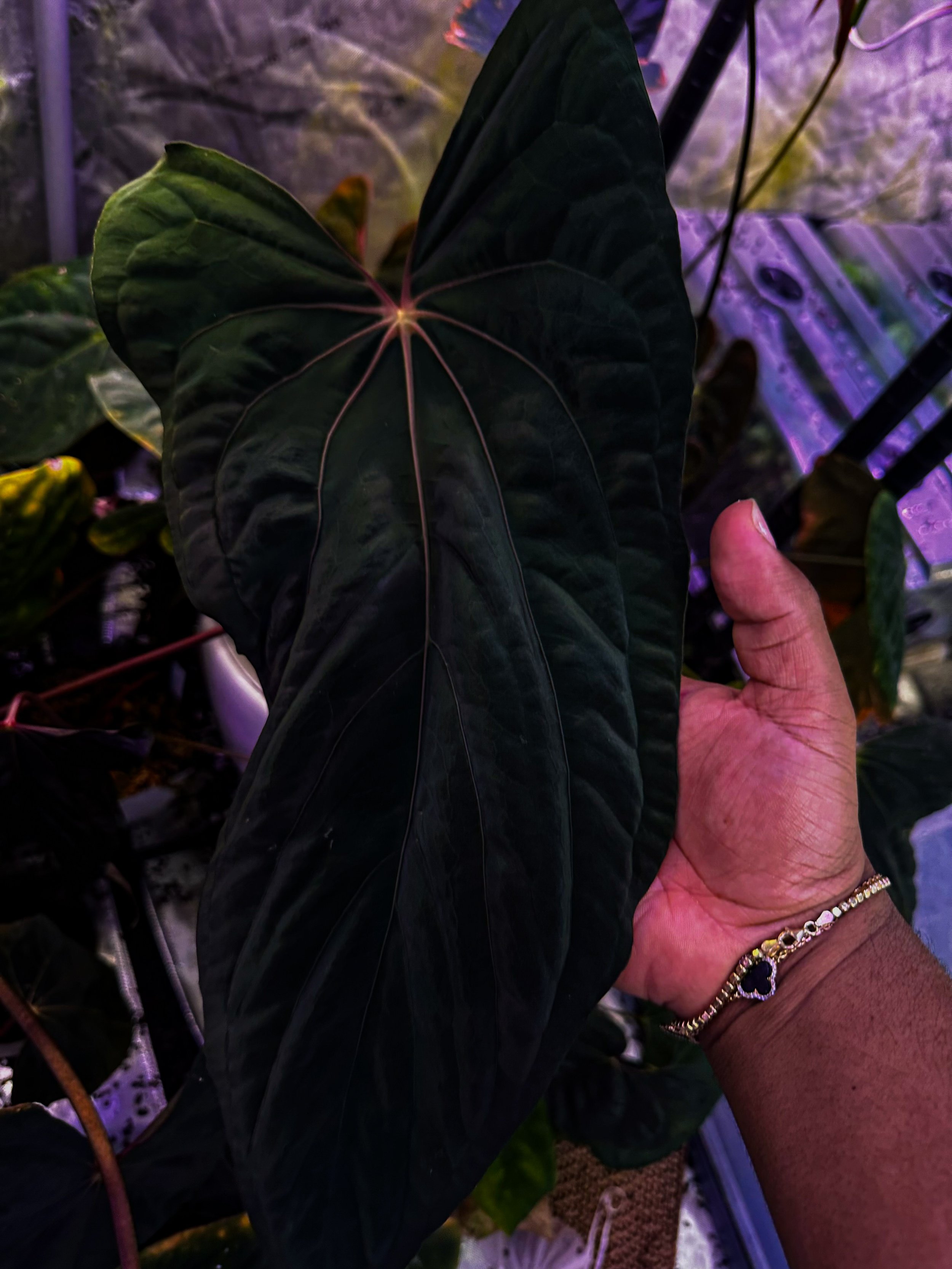Anthurium Papillilaminum 101.1
Anthurium Papillilaminum ‘Ralph Lynam’
Disclaimer
I'll preface stating para-taxonomy should be reserved for those qualified to do so. The information written here is based off my experience growing Anthurium Papillilaminum. Some from clonal or stem propagation and others from seed grown material. All of this information is a result of discussions with experienced Anthurium growers, information shared by accomplished taxonomist of Anthurium species, and my passion for the species.
I was initially hesitant to write out information for public consumption as I am not an expert. However I recognize the subject of pure Anthurium papillilaminum can be confusing and I wish to share information that I’ve gleaned from others that's helped me navigate the landscape.
Origin of Anthurium papillilaminum
It is public knowledge Anthurium papillilaminum is a very attractive species originating from Coastal Panama. There are three primary locations where this plant has been collected from and brought to the states: Panama Canal, Lago Gatun & Portobelo, all of which are located inside of the Colon Province. There are a small number of individuals who have seen this species in situ and have collected cherry picked plants for domestication and artificial propagation. These individual plants can vary and are considered different "clones" or “individuals” based on unique qualities and region, despite all being Anthurium papillilaminum.
Importance of Purity
In my experience, acquiring pure Anthurium papillilaminum can be challenging as there are only a handful of growers who can provide original provenance, while many sources, including reputable ones, do not. It can be challenging to determine if a 'Pap' is pure in some cases. Smaller seedlings and even larger plants in certain lighting or photographs can be difficult to distinguish. This is why it is important to collect these plants from individuals who have seen them in situ or, more likely as Anthurium collecting evolves, acquired their mother plants from individuals who have seen or collected them in situ.
This removes much of the guess work and will avoid potential disappointment if or when your plant reaches a size in which it can be more accurately identified and it shows characteristics not synonymous to the pure sp. Traceability and regional purity should be given importance especially for those who intend to breed these plants into further generations. Anthurium Papillilaminum hybrids have found their way into many breeding programs and have diluted what is already a tempestuous gene pool. It should also be noted, Anthurium papillilaminum hybrids can often be stunning in their own right, when grown under the right conditions. While some hybrids are very difficult to spot without close examination, often times their offspring will reveal qualities that were adopted from a parent 2 or more generations back that are contrary to pure Papillilaminum. As I am not an expert and should not be considered as such, I will leave the describing of specific characteristics of this species to those more qualified. But I will say that what makes this species so remarkable is the variability amongst seed grown material. Every plant is like a snowflake, unique in its own way. So there is no one cookie cutter guide as to how these plants should look within the species. Locality plays a large role in the what shape, color, etc of these plants display.
Dark Plant Matter
Objectively speaking, most Anthurium collectors consider Anthurium papillilaminum one of the most gorgeous species there is. Second to Anthurium dressleri, it has the potential for some of the darkest leaves a plant can have. With proper lighting and nutrition, a 'Pap's' black leaves can reveal themselves to much satisfaction. As a side note, my nutrition regimen is something that’s always a work in progress to find the most efficient methods. But as I continue to learn about these plants the more I realize that often times, less is more. A well balanced fertilizer, cal- mag, a micronutrient supplement and the OCCASIONAL chelated iron inclusion is most times all that is needed.
In my experience, I’ve observed that this species has a high tendency to yellow on the edges and/or defoliate with any minor change to environment whether it be lightning, humidity or moisture. I’ve been advised by an experienced grower and have come to terms with the fact that this is just the nature of some of these plants.
Here’s an example of one of my unnamed LG clones with this issue. Gorgeous still. Followed my a seed grown Lago Gatun pap with the same issue.
Anthurium Papillilaminum ‘Alpha’
With advanced grow tent cultivation and artificial lights being relatively new for these plants, I’m constantly toying with light intensity, photo periods and plants proximity to light. I’ve personally experienced more success with low-medium light levels with a longer photo period (from 16-18 hours of light). When it comes to proximity, I’ve realized that for me, as long as the light is touching the plant in anyway, it will be fine. Too close, of course will lead to crashing. Keeping these plants in near complete darkness( under artificial light) will result in odd vein leaking and pale/ yellow leaves when hardened. There are various growers who've done more to tinker with lighting and maintain more documented information. This is my experience with indoor growing.
General Information
All in all, outside of the little tweaks relative to your growing conditions, these plants are very fun to grow, and while they can put you through a roller coaster ride now and again, it always ends up being worthwhile.
I’ve found that moss is a benefit for rehabbing these plants. Whether it be recovering from a crash, root rot or unusual micro nutrient deficiencies that delay healthy growth. Moss has worked in recovery on across many different circumstances.
For a more comprehensive and taxonomical approach in understanding Anthurium papillilaminum, I encourage you to read Jay Vannini's article, The Ultimate Guide to Velvet Leaf Anthuriums. Jay is the man responsible for introducing many of the domestically bred pure 'Pap's' in the United States, having responsibly sourced from situ.
Here are some photos of some of the my favorite papillilaminum in my collection.
Anthurium Papillilaminum ‘Ralph Lynam’
Anthurium Papillilaminum ‘RA6’
Some very bullate f1 '‘Lago Gatun” I made last year.
One of my select ‘Ft. Sherman’ x ‘Ralph Lynam’
A select ‘Ralph Lynam’ x ‘Ft. Sherman’. The shape is crazy on this one. I dont particularly agree with these plants remaining “daggers” in maturity but if I did, this would be the one.
An incredible red vein, yet roundish Papillilaminum from the Cocle Region. I’ve nicknamed it ‘Rick James’. I’ll have selfs of this one in summer ‘24.
The very very first RL X FS I collected in 2020.
Anthurium Papillilaminum ‘RA4’ X ‘RA15”
A seed grown RL x FS I made in 2023
A select ‘Ralph Lynam’ x self I acquired from JV in 2022
Another select RL x FS
One of my ‘Ralph Lynam’ x self from my 2023 batch. I’ll have a small number or seedling size plants throughout the rest of this year.














